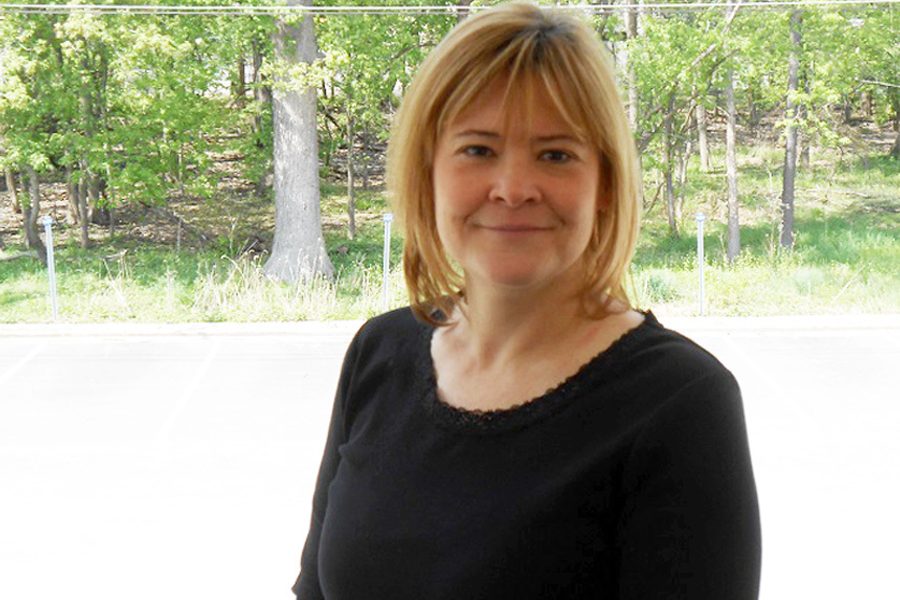
For three years in the early 1970s, journalist Studs Terkel gathered stories from a variety of American workers. He then compiled them into Working, an oral-history collection that went on to become a classic. Four decades after its publication, Working is more relevant than ever. Terkel, who regularly contributed to In These Times, once wrote, “I know the good fight — the fight for democracy, for civil rights, for the rights of workers has a future, for these values will live on in the pages of In These Times.” In honor of that sentiment and of Working’s 40th anniversary, ITT writers have invited a broad range of American workers to describe what they do, in their own words. More “Working at 40” stories can be found here.
When Kitty Scanlon talked with Terkel about her career as an occupational therapist, she described it as an “emerging profession,” a classification that occasionally led to self-doubts for Scanlon about how useful she was when compared to doctors or nurses. Now, occupational therapy, and physical therapy in general, is a thriving industry — and, as Phyllis Erdman tells ITT reporter Jeff Schuhrke, it often requires working long, hard hours to help patients gain or maintain their strength.
Although she’d been interested in working in the healthcare field her entire life, for years Erdman did administrative and marketing work in the nonprofit world. After getting laid off, in middle age she took the bold move of going back to school to become a physical therapist assistant (PTA). In the 7 years since completing her associate’s degree, she has helped elderly patients stay healthy and active or recover from surgery at a at a skilled nursing facility and rehab center in the Chicago area. She explains, “As a PTA, I work under the scope of the PT to get the patient toward their goals, but I get to set up my own routine with the patient.” This interview has been abridged and edited.
Most of my patients are in their 80s and 90s. If someone’s in their 70s, they’ll be like, “Oh, I’m old,” and I’ll say, “No, you are so not old! If you’re not over 85, you’re not old.” [laughs] I’m more comfortable with the geriatric population. I think a lot of outpatient facilities are more sports injury-oriented, and I’ve never been a big sports person. I like them, but I’m not this fantastic athlete that a lot of the therapists are. So it’s just not my niche.
But the geriatric population is so cool. Like the men — most of them were in the military during World War II. One man I worked with was a pilot in the war and his plane went down. He survived. Neat guy. And none of those World War II guys are braggers; they’re very humble.
I’ve even worked with two or three women who survived concentration camps in Europe. One woman, who was Polish, told me she was about 12 when the Nazis came. Her mother and her brother were taken off to a work camp because they could work, but she and her grandmother, being older and younger, were taken to a separate camp. She said she watched her grandmother starve to death sitting right next to her. It’s terrible, awful. We can never imagine what it would be like to go through that — or I can’t. It’s pretty amazing to hear their stories.
I develop a pretty strong bond with them. I have to get to know somebody and just figure out what makes them tick, and then I just kind of go with it. Typically I’ll see seven to nine people a day, in an eight-hour time span. The treatments will be anywhere from 35 to 60 minutes long, depending on why that patient is there. I’m full-time, so I work an eight-hour day as long as we have enough patients on caseload to do that, and typically we don’t have a problem. Sometimes admissions status gets a little low, and then managers start to sweat, because it is a profit-based business.
Typically I’ll warm patients up with exercises in sitting, depending on the person and their level of recovery. If they’re really high-level, I’ll just get them on their feet right away, because they spend so much time either sitting down or lying in bed when they’re in rehab. I’ll put weights on them and go through probably like 15 or 20 minutes of exercise right off the bat. We’ll practice walking. We’ll have them throw things; we’ll play ball. There are all kinds of things to do. For higher-level people, we’ll put cones down on the floor and have them weave in and out, stepping over items. Because if they’re gonna go home, they need to be able to maneuver safely.
We also use electrical “stim” to improve patient muscle function. It’s short for neuromuscular electrical stimulation, and it helps muscles contract — there’s many ways to safely electrocute people. [laughs] I sound kind of devious. [laughs] We get teased a lot about how mean we are. Our patients say PT stands for “pain and torture.” I have a list of nicknames I’ve been called, like “dragon lady.” [laughs] You don’t take it personally; it’s kind of fun. You have to have a twisted sense of humor to work where I work.
I have the best co-workers anybody could ask for. We have the best therapy team. You have to work together because we get a lot of patients that are big or heavy; they need a lot of help to go from sitting to standing, and that’s heavy-duty work. So if you really want to save your back, you need to get your co-workers to help you. It’s not real smart to try to be Superman in there.
Originally, I did work directly for my facility. Then three years ago, our program manager came in and said, “Oh, by the way, they feel that it is more fiscally beneficial for them to outsource their therapy and they’re turning it over to an agency that just sends occupational therapists, physical therapists, and speech therapists to facilities.” We didn’t know if we’d have jobs at first, but the agency was kind enough to offer me a job. That’s more the way the therapy world is going. There’s very little in-house therapy any more.
Within the agency, they push harder. I get it from the business standpoint because the nursing home probably wasn’t turning enough profit to feel the need to keep us under their payroll. So they brought in an agency, and the agency pushes us really hard. I usually work more than eight hours. I get paid for eight hours — there’s no overtime right now; they’re really not approving any. I’ll be there doing paperwork on my own time. We work through lunch. I told a nurse recently, “90 percent of the time that you see me here after 6 p.m., I’m on my own time; I don’t get paid for this.” It’s up to us to figure out how to get our paperwork done.
We have a “productivity level,” meaning a set percentage of hours that’s spent with patients. After the agency took over, they raised the productivity level to 94 percent. In other words, 94 percent of the time we’re on the clock is supposed to be spent with the patient. We do our own filing, we transport our own patients from their rooms to the therapy gym, we make all our own copies. You talk to nursing, you talk to family members, sometimes you go to get a patient and they’re not ready. You can lose 15 minutes just like that [snaps fingers].
We’re now doing online documentation, which we weren’t doing before. It was all paper before. I like online documentation better; to me it’s more efficient, but still time-consuming. It takes me anywhere from 20 to 30 minutes to do my billing at the end of the day. I timed myself! I feel like we’re trying to beat the clock all day long. It’s terrible in that sense. We’re all there for the patients and we all do this because we like it, but then we find ourselves looking at the clock going, “I gotta get Mrs. Smith in an hour and holy cow!” I felt like after the agency took over, the money and the patient are pretty much neck-and-neck in terms of priority. I mean the patient does come first, but at the same time, the money’s right there too.
PT is one-on-one, and you get a lot of patient contact. I actually get to know my patients probably better than some of the nurses, besides the certified nursing assistants. Nurses help get them in and out of bed and get them dressed. They have the hardest job in the building and they don’t get paid nearly enough. It’s a really, really hard job.
Because of the environment I work in, I deal with a lot of people with dementia. That’s another challenge — figuring out how to get someone to work with me if they’re not real receptive. We say that our job is 60 percent psychological in my facility. Not all of them make it. It can be really sad. It’s a hard environment because I’ve watched a lot of people die. We get really close to them. It’s hard.
At the same time, my favorite part is getting to know the patients and helping them reach their goals and getting them as independent as possible. I’ve had a lot of people come in who can’t walk at all, and then eventually they walk out the door. It is very cool.
Usually, patients are their own worst critics. Like they’ll walk five feet when they couldn’t even stand up two weeks before, and we’ll be going, “That’s great!”
And they think it’s terrible. They’ll say, “But I used to walk all over.” They’re looking at the big picture, and in therapy, it’s the little successes that add up. So when they do get excited about those little successes, that’s kind of neat. Because they’re so proud, they feel so good. It’s just neat watching what the human body can do.
Jeff Schuhrke is a labor historian and assistant professor at the Harry Van Arsdale Jr. School of Labor Studies, SUNY Empire State University. He is the author of Blue-Collar Empire: The Untold Story of US Labor’s Global Anticommunist Crusade.







